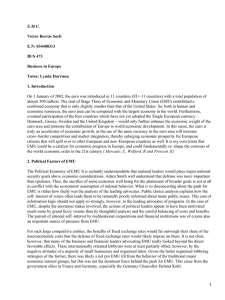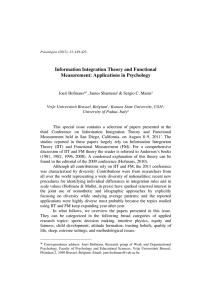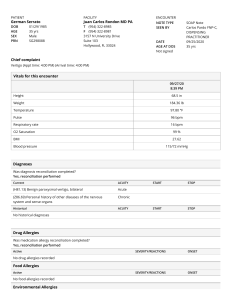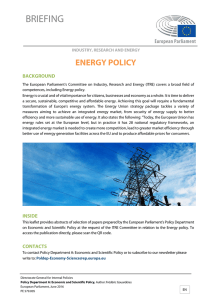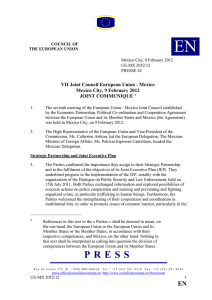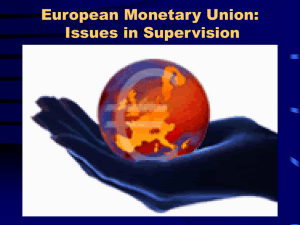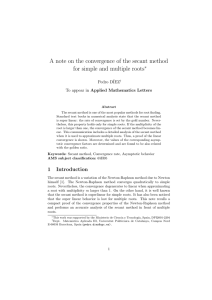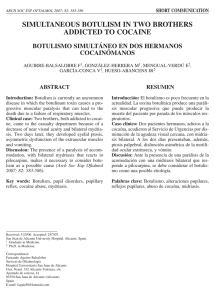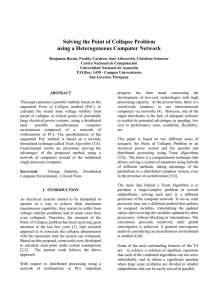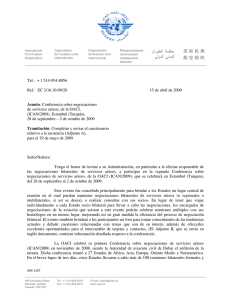Agglomeration versus dispersion in the European Monetary Union
Anuncio
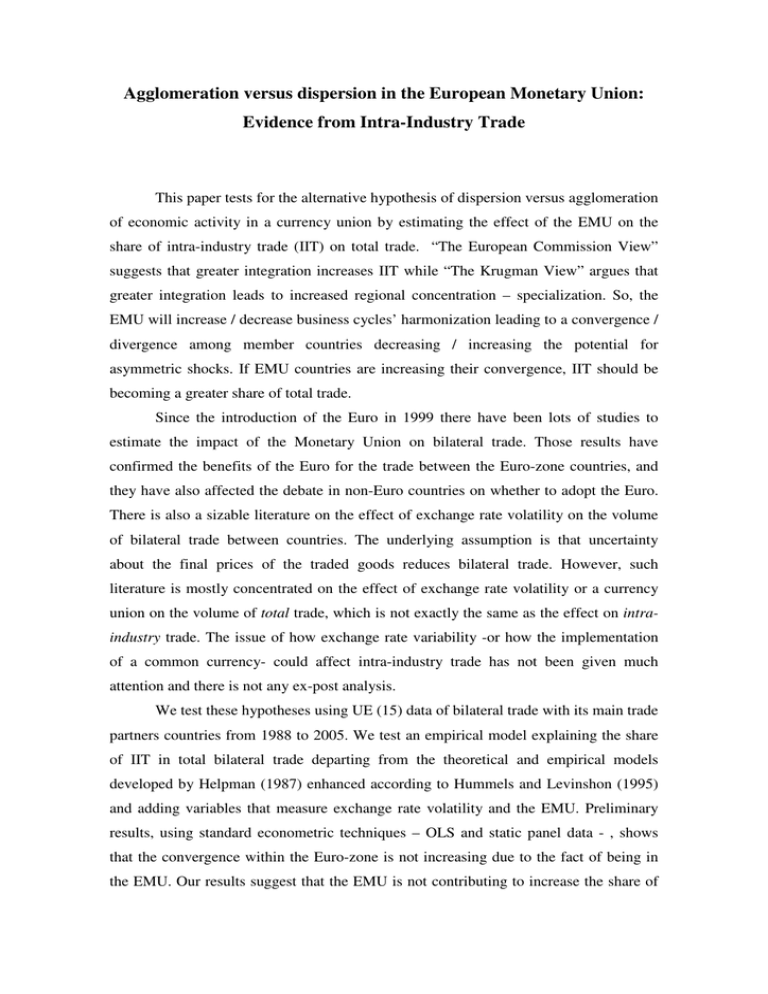
Agglomeration versus dispersion in the European Monetary Union: Evidence from Intra-Industry Trade This paper tests for the alternative hypothesis of dispersion versus agglomeration of economic activity in a currency union by estimating the effect of the EMU on the share of intra-industry trade (IIT) on total trade. “The European Commission View” suggests that greater integration increases IIT while “The Krugman View” argues that greater integration leads to increased regional concentration – specialization. So, the EMU will increase / decrease business cycles’ harmonization leading to a convergence / divergence among member countries decreasing / increasing the potential for asymmetric shocks. If EMU countries are increasing their convergence, IIT should be becoming a greater share of total trade. Since the introduction of the Euro in 1999 there have been lots of studies to estimate the impact of the Monetary Union on bilateral trade. Those results have confirmed the benefits of the Euro for the trade between the Euro-zone countries, and they have also affected the debate in non-Euro countries on whether to adopt the Euro. There is also a sizable literature on the effect of exchange rate volatility on the volume of bilateral trade between countries. The underlying assumption is that uncertainty about the final prices of the traded goods reduces bilateral trade. However, such literature is mostly concentrated on the effect of exchange rate volatility or a currency union on the volume of total trade, which is not exactly the same as the effect on intraindustry trade. The issue of how exchange rate variability -or how the implementation of a common currency- could affect intra-industry trade has not been given much attention and there is not any ex-post analysis. We test these hypotheses using UE (15) data of bilateral trade with its main trade partners countries from 1988 to 2005. We test an empirical model explaining the share of IIT in total bilateral trade departing from the theoretical and empirical models developed by Helpman (1987) enhanced according to Hummels and Levinshon (1995) and adding variables that measure exchange rate volatility and the EMU. Preliminary results, using standard econometric techniques – OLS and static panel data - , shows that the convergence within the Euro-zone is not increasing due to the fact of being in the EMU. Our results suggest that the EMU is not contributing to increase the share of IIT on total trade. Hence, convergence of productive structures is not increasing and, hence, business cycles are not becoming more synchronized and shocks may not be less asymmetric. Further research will improve econometric techniques solving endogeneity and autocorrelation problems by means of dynamic panel data estimators. José Vicente Blanes Cristóbal (Universidad Pablo de Olavide) and Aurora Trigo Catalina (Universitat Autònoma de Barcelona) JEL Classification: F10, F12, F14, F15, F31, F33, F36, F4, R12. Keywords : Intra-industry trade, economic integration, European Monetary Union, exchange rate variability, agglomeration, dispersion, European Union, Spain. Corresponding autor: José Vicente Blanes Cristóbal Dpto. de Economía, Métodos Cuantitativos e Historia Económica Universidad Pablo de Olavide Ctra. De Utrera, Km. 1 41013 Sevilla e-mail: [email protected]


